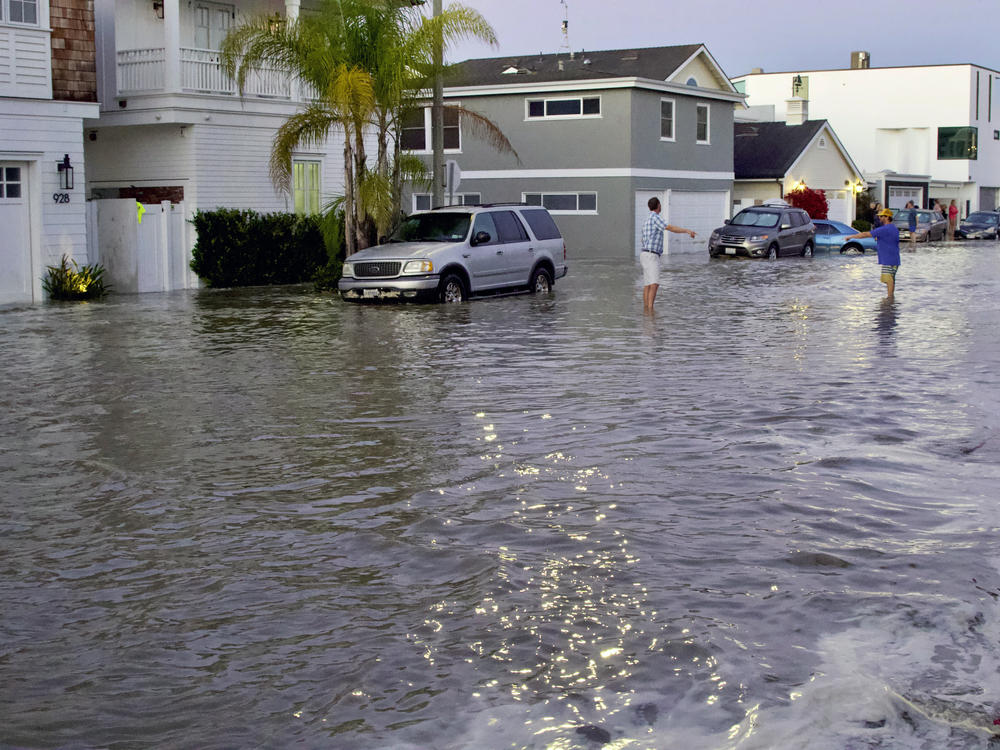Section Branding
Header Content
There's Not A Cloud In The Sky, But Your House Could Still Be Underwater
Primary Content
Coastal neighborhoods around the U.S. are seeing a steady increase in high tide flooding, as sea level rise accelerates and sends seawater into homes, sewers and streets. The problem is expected to get worse in the coming years, federal scientists warn.
In 2021, 14 coastal locations broke or tied records for the number of so-called sunny day floods, when water infiltrated neighborhoods even though there was no storm, according to the annual high tide flooding report from the National Oceanic and Atmospheric Administration.
That includes Galveston and Corpus Christi, Texas, which each set records of more than 20 days of high tide flooding in 2021. Residents of Pensacola, Fla., and Charleston, S.C., each experienced 14 days of high tide flooding in 2021.
That's a huge increase over just two decades ago: all four cities saw two days of tidal flooding or less in the year 2000.
"Damaging floods that decades ago happened only during a storm are now happening more regularly, even without severe weather," says Nicole LeBoeuf, the director of NOAA's National Ocean Service.
The cause of the flooding is clear: human-driven climate change. People are burning fossil fuels that release enormous quantities of greenhouse gases into the atmosphere. That's causing the Earth to heat up rapidly, which melts ice and causes the water in the oceans to expand, both of which drive sea level rise.
"Sea levels are going up quicker than anticipated and the number of flood days are following suit," says William Sweet, an oceanographer at NOAA's National Ocean Service. "There's a lot of heat and there's a lot of warm water."
In some areas, the land is also sinking. That includes the Chesapeake Bay region, where the land is naturally subsiding, and parts of the Gulf Coast where fossil fuel and drinking water extraction are hastening land loss. When the land sinks while the water rises, flooding is even more severe.
Scientists expect high tide flooding will continue to accelerate in the coming years. Long-term projections for the U.S. suggest that the average number of days with high tide floods could double by the end of the decade.
Beginning in the mid-2030s, a change in the lunar cycle will amplify climate-driven tidal flooding, a recent study by NASA scientists warned. The moon's orbit has a natural wobble, and when the moon is slightly closer to the Earth, tides are a little higher.
Local governments in coastal areas are increasingly reliant on official predictions about tidal flooding. Floods can affect emergency services and schools, and local planning departments must decide where to build new buildings in light of increased flood risk.
NOAA's ocean scientists continuously monitor tides around the U.S., and release seasonal predictions for each U.S. region. Those predictions include specific dates that residents in each region of the country can expect to see high tide flooding, such as water running in the streets or bubbling up through storm drains.
Copyright 2021 NPR. To see more, visit https://www.npr.org.

